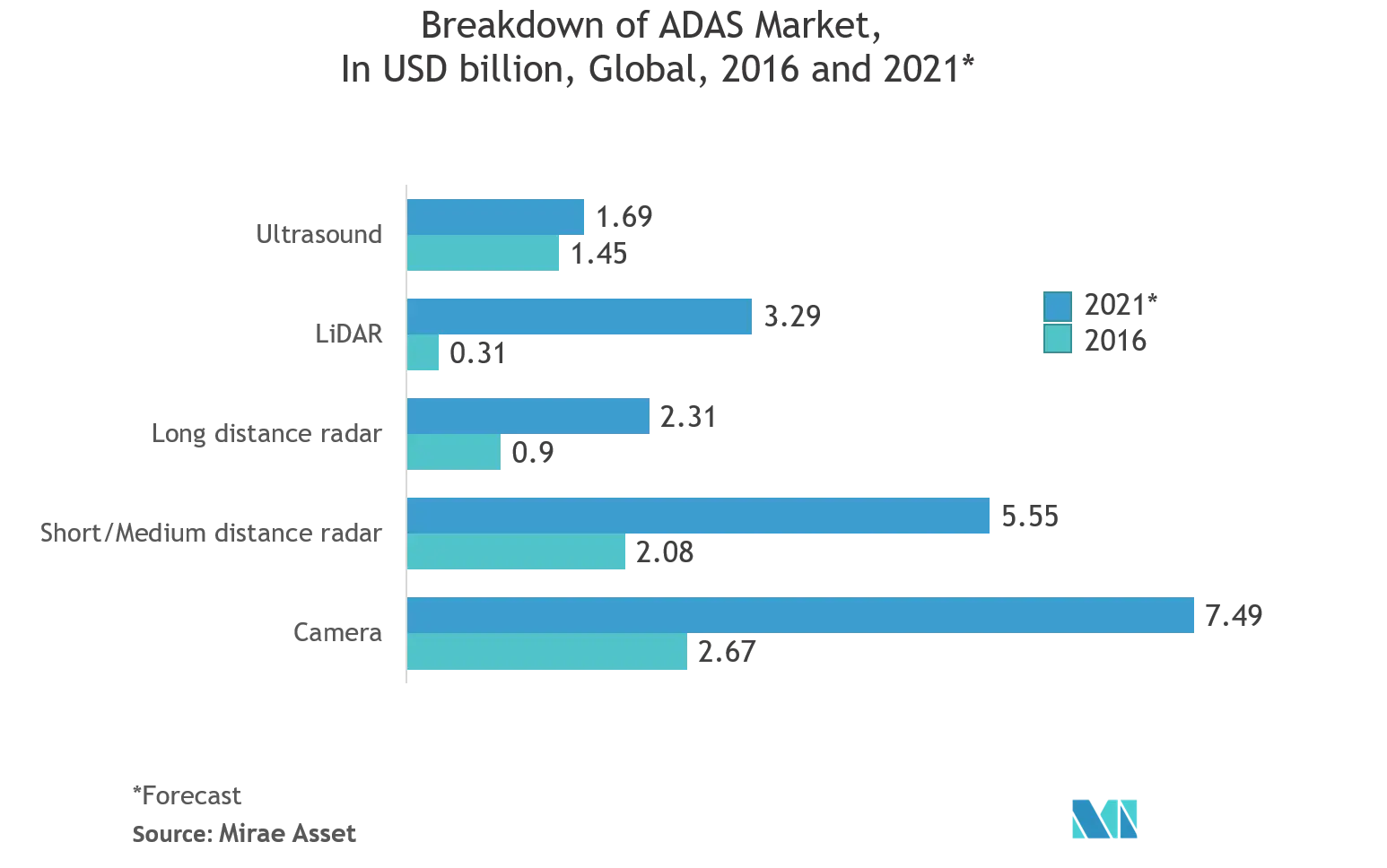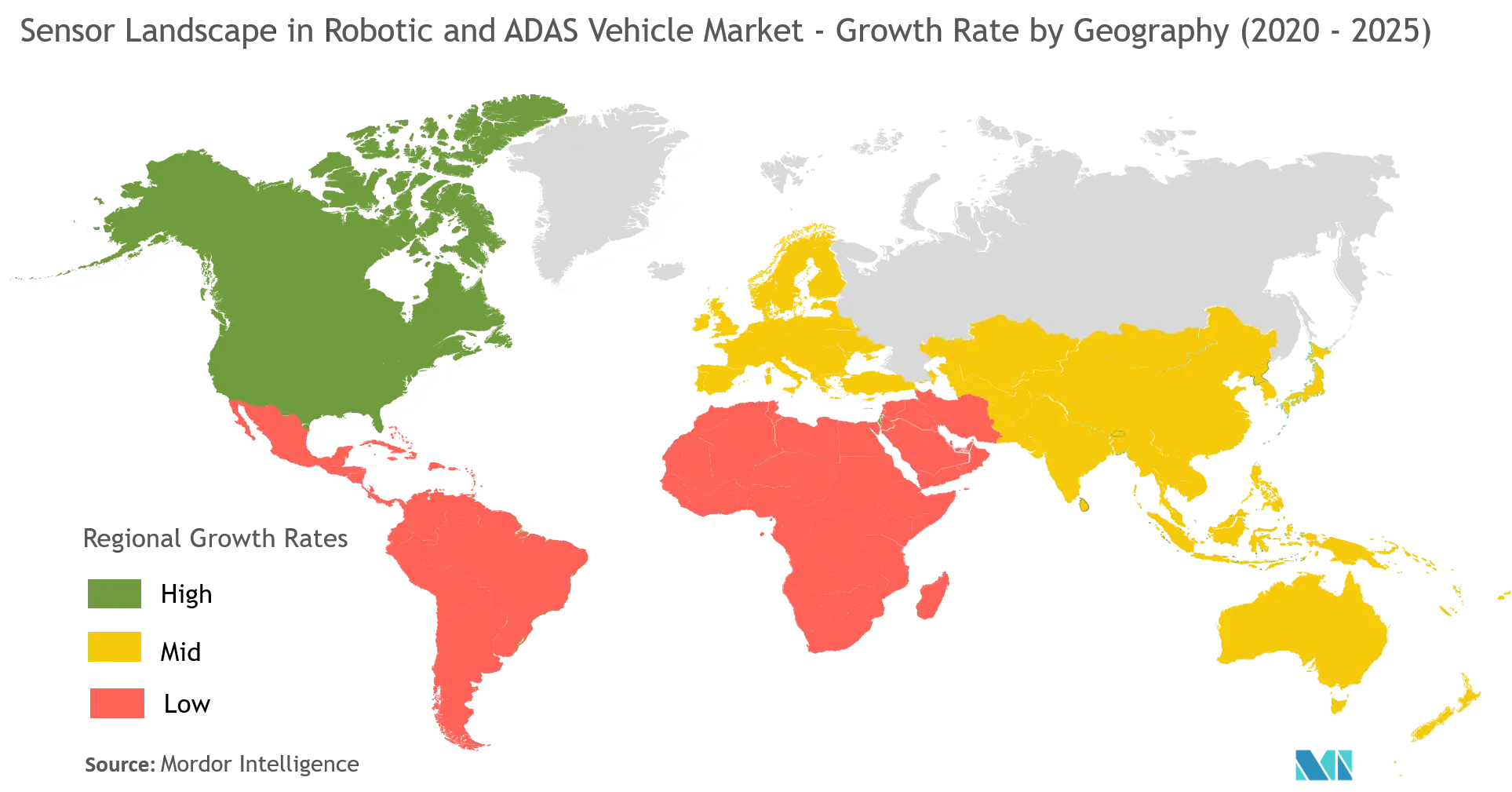Market Trends of Sensor Landscape in Robotics and ADAS Vehicles
This section covers the major market trends shaping the Sensor Landscape in Robotics & ADAS Vehicles Market according to our research experts:
Radar Sensor is Expected to Drive the Market Growth
- The automotive industry, which is presently undergoing a technology transition focusing on increasing safety, comfort, and entertainment, provides ample opportunities for the application of radar sensors. Emerging sensor-rich applications, such as drones, autonomous vehicles, and ADAS applications, are further accelerating the need for radar sensors.
- In November 2020, GroundProbe has extended its comprehensive Slope Stability Radar (SSR) product offering with the release of the SSR-Agilis. The SSR-Agilis is a 3D Real Aperture Radar that provides unique measurements that are less susceptible to contamination, crucial for safety-critical monitoring in high traffic work areas.
- With the advent of autonomous/self-driving cars, increasing the adoption of radar sensors can be witnessed. Over the forecast period, innovations are expected to drive the demand for radar sensors in the automotive industry.
- For instance, In March 2019, the European Commission announced a revision of the General Safety Regulations to make autonomous safety technologies a mandatory requirement for vehicles manufactured in Europe, in a bid to bring down accident levels in the region. Stringent regulations are pushing the automotive vendors to implement the latest radar sensor-based systems. This is creating an opportunity for the market.
- However, radar sensors have high initial costs with diversified functionality, and the cost varies based on the type, range, and technology being deployed for different sensors. Ultimately, the exact price of any radar sensor is unique. The cost for the radar sensor is dependent on a variety of factors, such as the type of sensor used, the range to which the sensor is adapted, and the applications supported by the sensor, which will be bundled into the total cost.

North America is Expected to Hold Major Share
- The North America region is one of the pioneers in adopting ADAS-enabled vehicles and self-driven transportation solutions. According to the Deutsche Bank, the US ADAS unit production volume is expected to reach 18.45 million by 2021.
- Owing to the better performance, prominent companies, like Google, Uber, and Toyota, are using LiDAR. At the same time, the relatively lower cost has persuaded Tesla to use radar sensors as the primary sensors in its self-driving cars. The companies are continuously trying to incorporate multiple alternative sensing technologies in a vehicle to enhance the effectiveness of the system.
- Prominent automakers (over 13 major auto manufacturers), and vendors offering radar sensors (Bosch, Lockheed Martin, among others) in the region are expected to emerge as a source for innovation and is estimated to hold a significant position in the market. According to the American Automotive Policy Council, over the past five years, the exports from the automotive sector were valued at USD 692 billion, and the automotive industry alone contributes to 3% of the region’s GDP, which effectively contributes to the growth of the market studied.
- However, due to the trade war among the USA and China, the US government is planning to increase tariffs up to 25% on vehicles and car parts imported from China. China is the second biggest exporter of components to the United States, after Mexico. The United States is one of the largest auto markets in the world, and such tariffs will likely affect the automotive sector. As per the World Trade Organization, the conflict between these countries will directly affect 3% of the global trade and 8% of the automotive industry. Such situations are expected to have an impact on the sensor landscape in robotic and ADAS vehicles in the region.

